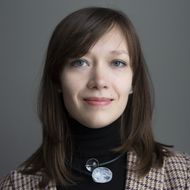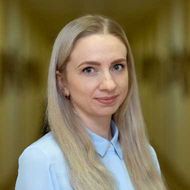Professional Burnout Syndrome: Identification Using Artificial Intelligence Methods and Economic Impact Assessment
RSF project 25-18-01037
This project addresses the issue of analyzing determinants and economic consequences of professional burnout, with particular emphasis on employing innovative methods of artificial intelligence for identifying and assessing this phenomenon.
General information about the project
Abstract
The syndrome of professional burnout, defined as a state of emotional, physical and mental exhaustion caused by excessive and prolonged stress (ICD-11), is becoming an increasingly serious problem in both global and Russian economies. According to surveys, 62% of employed Russians consider themselves emotionally burned out (RBC, 2022), while nearly half of Russia's population has experienced deterioration in their psychological well-being since early 2023. Burnout manifests itself through lack of energy, detachment from work tasks, and decreased employee productivity. This condition leads to numerous negative economic outcomes such as reduced labor efficiency, poorer performance results, increased costs associated with staff turnover and diminished workforce availability.
Existing methods for identifying burnout typically rely on self-reported surveys. The assessments obtained using these methods are prone to several issues: they can be distorted by respondents' mood and behavioral characteristics, and do not allow distinguishing between burnout and other psychological conditions, such as depression. This complicates accurate diagnosis of the syndrome and prevents evaluation of its economic effects. Artificial Intelligence (AI), particularly Natural Language Processing (NLP) techniques applied to detect burnout, overcome problems inherent in self-reported questionnaires because they provide objective evaluations free from social desirability bias and other distortions, and can be used to analyze large samples of individuals. However, development of burnout measurement methods based on NLP began only recently and is currently limited to English-language texts, raising questions about validation and adaptation of these methods to Russian-language texts. Furthermore, studies on burnout often use small sample sizes, which makes it impossible to assess either factors leading to burnout or its consequences. Therefore, the aim of this project is to identify the determinants and economic consequences of professional burnout identified using AI-based methods.
The aim and tasks of the project
The aim of this project is to identify the determinants and economic consequences of professional burnout detected through the application of artificial intelligence methods.
To achieve this aim, three key tasks will be addressed:
- conduct desk research into the phenomenon of professional burnout, its economic implications and methodologies for measuring it, focusing specifically on artificial intelligence approaches;
- develop a methodology for detecting burnout utilizing artificial intelligence tools, including those related to natural language processing;
- empirically establish the determinants and economic impacts of professional burnout.
The feasibility of achieving the project’s aim is ensured by a team possessing expertise in areas such as analysis of economic effects, implementation of artificial intelligence methods, linguistics, psychological counseling and experience in collaborative project execution.
Expected results and their significance
Upon completion of the project, new knowledge in managerial economics is expected to emerge, contributing theoretically, methodologically, and empirically to advance practices regarding employee burnout diagnostics and identification of economic effects associated with this phenomenon. The theoretical contribution of the project lies in its interdisciplinary approach that integrates economic and management theories, organizational psychology, linguistics and applications of artificial intelligence tools for studying professional burnout. Theoretical advancement will be represented by classifying the economic effects of burnout syndrome across multiple levels — individual, team, organization, region, country. Unlike previous works treating these levels separately, this study, grounded in systematic analyses of prior international and domestic research spanning various scientific disciplines, aims to consolidate existing knowledge concerning the economic impacts of burnout syndrome. The resulting classification could serve as a foundation for future investigations and would prove beneficial in formulating public policies aimed at occupational safety and public health.
The central outcome of the project will be methodological development for measuring the syndrome of professional burnout along with a description of the algorithm for its application. To measure individual employees’ predisposition towards burnout, a novel metric will be developed based on the analysis of text communications in Russian. In line with global standards for applying natural language processing tools, the project team will propose a metric using open data, expert annotations and classical neural network models like BERT for classification purposes. The developed burnout metric, specifically the algorithm for obtaining it, will be formalized as an intellectual property object capable of legal protection. The proposed method for measuring burnout syndrome and the methodology for its practical application will benefit other researchers by enabling them to investigate the phenomenon using objective data derived from extensive samples of economic agents. This result may have significant practical utility within Russian companies, facilitating the creation of recommendation systems regarding employee states and, for instance, implementing preventive measures against burnout via calendars.
The project also aims to generate new empirical insights regarding the factors and economic effects of burnout syndrome. Using publicly available datasets from professional communities, company pages and social media groups, hypotheses about the impact of burnout indicators on the performance outcomes of corresponding-level economic agents will be tested. Leveraging open-source internet channels of professional bloggers, esports athletes, and personal profiles on social networks, the project team will test hypotheses concerning the influence of age, gender identity, exogenous shocks, and other variables on the emergence of burnout syndrome, as well as examine the economic effect of this syndrome on individual productivity. Unlike previous studies, the application of the newly-developed burnout metric allows for substantial expansion of respondent samples, making it possible to obtain, for the first time, unbiased empirical estimates of professional burnout syndrome that are unaffected by behavioral biases.
News and results in 2025
Events
- On October 30-31, 2025, within the framework of the XII International Conference on Applied Economics iCare, project participants presented research studies (for more details follow the link):
-
Teplykh G.V. “Analysis of the Negative Impact of Occupational Burnout Risk on Human Capital in Russian Regions”
-
Matkin N.А., Shenkman Е.А., Permyakova Т.М. “Google Search for Burnout and National Culture”
-
Semenova D.V., Provorova А.А., Zavertiaeva М.А., Permyakova Т.М. “Scale for teaching burnout: adaptation for Russian language”
-
Matkin N.А. “Happiness Emodities: Commodification and Marketing Strategies in Popular Psychology on Youtube”
-
Smirnov А.О., Paklina S.N., Parshakov P.А. “Workplace Practices and Burnout Signals in Employee Reviews”
-
- On October 10, 2025, Tatiana Mikhailovna Permyakova presented the results of a comparative analysis of the word portraits for "выгорание" and "burnout" using corpus data from Russian and English languages at the IDLab seminar (for more details, follow the link).
- On October 7, 2025, Nikita Matkin presented study “Happiness Emoproducts: Commodification and Marketing Strategies in Popular Psychology on YouTube” at the 5th International Conference on Discourse Studies and Media Criticism. For more details, follow the link.
- On September, 29, 2025, a working seminar was held under the framework of the project during which two literature reviews were presented: one focused on methods of measurement, predictors and markers of professional burnout, and another dedicated to the findings of topic modeling of scientific articles using AI. For more details, follow the link.
- From September 11 to 14, 2025, Sophia Paklina participated in the International Conference ICEBDA-2025 (Istanbul, Turkey), where she presented study "Application of Machine Learning Methods for Detecting Emotional Burnout and Investigating Its Relationship with Performance: A Case Study in Esports" within the section "Applied AI: From Sports to Finance and Economy". For more details, follow the link.
- On August, 27, 2025, members of the grant’s working group attended the Methodological Day for Teachers-Psychologists and Social Educators in Perm, organized as part of traditional August meetings for education professionals. For more details, follow the link.
- On July, 1, 2025, an IDLab workshop was held, at which Maria Anatolyevna Molodchik presented the results of the study "Digital Solutions for Diagnosing Employee Burnout" in collaboration with Molodchik N.A., Kibardina A.A. and Maximova I.A. For more details, follow the link.
- On May, 29, 2025, at the IDLab Working Seminar M.A. Zavertayeva, Yu.N. Naidenova, and A.D. Kiriecheva shared preliminary results of their study "Professional Burnout Index Based on Mass Media in Russia" (for more details, follow the link).
- On April, 22, 2025, the first working seminar took place, wherein primary objectives and tasks of the project were discussed. For more details, follow the link.
Head of the project
Have you spotted a typo?
Highlight it, click Ctrl+Enter and send us a message. Thank you for your help!
To be used only for spelling or punctuation mistakes.









